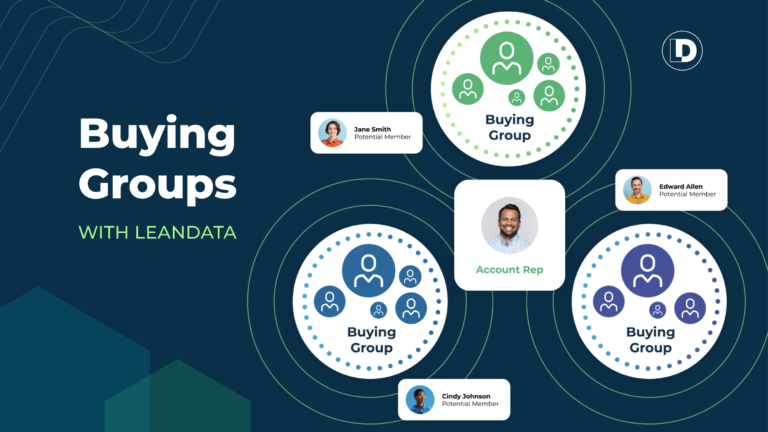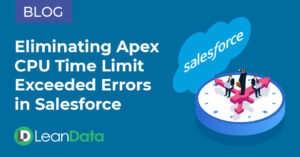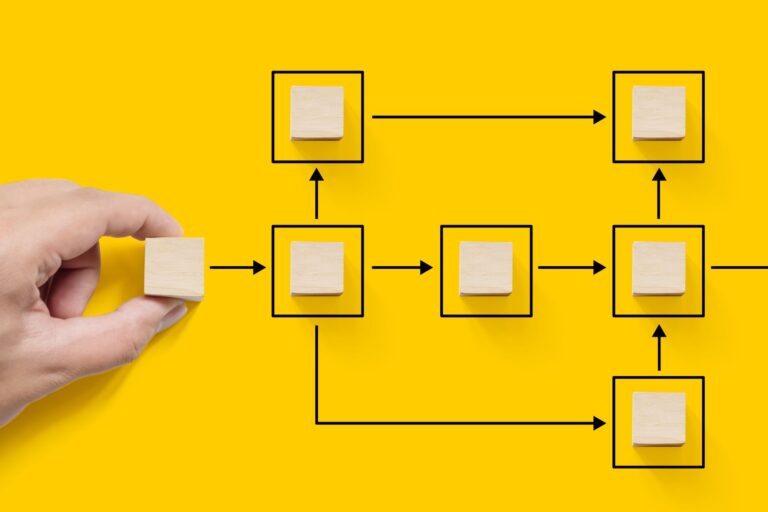An effective Information Technology (IT) strategy is critical for any business attempting to scale and grow its revenue. Digital transformation is sweeping across every industry, offering countless tools and applications that enable every department of the organization to operate with the click of a button. Leading this charge is the revenue tech stack that empowers revenue teams to deliver results by eliminating the manual, time-consuming and error-prone processes from their go-to-market (GTM) motions.
At the core of this technological revolution lies CRM platforms, which centralize and maintain customer data, and act as the foundation on which everything else is built. Every company’s Salesforce instance is the hub or “system of truth” that connects other platforms, like Marketo for marketing automation, 6sense for organizational intent data, or High Velocity Sales (HVS) for structuring cadences and streamlining sales/marketing touch points. Together, those technologies weave across multiple departments and help drive the business’ GTM strategies. Among other responsibilities, the IT group is tasked with filling the gaps in the sales stack.
The Important Role of IT
Often, a natural tension arises between the IT team and their various internal customers. Both sales and marketing operations, who are the orchestrators for the broader revenue team, often have very time-sensitive demands.
Sales Ops and Marketing Ops are customer-facing, and they are directly responsible for the company’s growth objectives. However, they often lack technical resources on their teams, forcing them to queue alongside the rest of the organization for IT services and solutions. And without these technical resources, both Sales Ops and Marketing Ops get locked into project timelines that misalign with their expectations, negatively impacting customers’ and prospects’ buying experiences.
IT teams want to be an ally for Marketing and Sales Operations teams, and remove the development bottleneck – further enabling the revenue teams to strive towards the organization’s growth goals. But, there is risk involved with relinquishing control over technology solutions – the ripple effect that any changes might have within Salesforce and the rest of the tech stack. For any growing business, this intra-organizational dance raises an all-important question for IT teams: How do we decentralize our responsibilities without losing governance over the business’ tech stack?
GTM Tools & Salesforce
In the simplest of terms, there are four buckets of tools that feed a GTM strategy within Salesforce: Marketing Automation, Data Intelligence, Sales Engagement and GTM Analytics. Each bucket includes a series of point solutions that offers a dedicated set of tools that feed into – and out of – Salesforce.
Marketing Automation solutions like Hubspot, Marketo, Eloqua and Pardot enable companies to better manage their various marketing campaigns, which directly feeds into lead generation for the revenue team. As prospective customers engage with content, leads can be generated through the platform and pushed into Salesforce for a seller to pick up. New leads likely join a large list, alongside all of the other leads that have flowed into the business, and someone (or something) needs to pick this lead up and continue it along the process.
Data Intelligence solutions like 6sense, ZoomInfo, Dun & Bradstreet and Clearbit provide deeper insights around leads, contacts and accounts. Once triggered, they populate whatever data they have about the object in Salesforce, further enriching the dataset for the seller to use. But, once again, it’s up to someone (or something) to perform an action with this object.
As leads or contacts move throughout the sales process, sellers nurture these prospects with tailored outbound activities, leveraging Sales Engagement platforms (SEPs) like HVS, Salesloft and Outreach. With structured cadences or sequences, sellers target specific accounts to gain additional interest and, hopefully, create an opportunity.
Finally, all along the buyer journey, sales managers and sales ops try to extract insights about the selling process using analytics packages like Tableau, Power BI, Lookr and Domo. They use whatever data is available to better understand their demand generation process and how to generate more pipeline, faster.

Each solution exchanges data back and forth between Salesforce, but the orchestration of the entire sales process between each solution is still dependent upon manual touch points along the buyer journey. For a small sales organization, this can be managed fairly easily. But, as the revenue team grows, so does the complexity of managing any manual processes. The need for solutions that connect each of these disparate systems naturally arises, leaving revenue teams with a desire for more automation.
Orchestration within Salesforce
In an attempt to fill the GTM gaps, IT teams create automation within Salesforce using Apex jobs. With the native SOQL language, developers and skilled SFDC administrators build custom processes to enable their revenue-generating activities. These custom blocks of code have their limitations though.
In the instance of routing a hot marketing qualified lead (MQL) to an account owner within Salesforce, an Apex job can be created to leverage logic-based rules, which reference the associated fields and ultimately assign the lead to the correct seller. It could then mark a “Check Box” field to trigger a secondary process, effectively creating an automation workflow for this part of the selling process. The end result of this automation can be tracked and reported upon. But what happens when there is a change to the process?
New hires, territory changes, process updates, bad data and so many other factors impact the outcomes of Apex jobs. And, in order to make any changes, it likely requires a development resource to perform any updates and redeploy the process. On top of that, the only way to troubleshoot the outcomes of the job is to dig into the audit log script, which requires a degree of technical knowledge to understand. All of this results in additional work for the IT team, as well as negative outcomes for the revenue team (i.e. lost leads, missed opportunities, missed bookings) while they wait for updates to be made. Which brings back the original question for IT teams – How do we decentralize our responsibilities without losing governance over the business’ technology stack?
A New Way for Revenue Orchestration
With change being fairly constant for Sales and Marketing Operations teams, it’s crucial to have flexible methodologies for revenue orchestration. Much like every other platform in their tech stack, they should be able to own their team’s success with an agile set of tools that allows them to proactively update their revenue processes. After all, revenue operations teams should be focused on delivering outcomes.
LeanData’s any-object Routing revenue orchestration platform is the no-code interface that sits directly within Salesforce, weaving together the entire GTM strategy from end to end. Since LeanData is 100%-native to Salesforce, the platform leverages any data field, standard or custom, to build seamless workflows. Workflows that take objects like new or updated Leads and place them directly into the hands of the team member who should own that object.

Instead of creating complex Apex logic to call upon a custom map within Salesforce, LeanData offers a set of drag-and-drop nodes that allow users to make updates with ease. For example, at critical steps within the workflow, administrators can drop in nodes for tracking SLA’s, enabling sales managers and other leaders across the organization to track metrics like lead response time (speed to lead) and time to action. Metrics that are otherwise lost, within the revenue orchestration process, but are invaluable for growing a business. With other nodes that have direct integrations into platforms like Slack, LeanData can trigger instantaneous notifications to the revenue team, ensuring hot leads are being picked up ASAP.
Sales Engagement platforms aren’t left out either. Salesloft, Outreach, and High Velocity Sales all have direct integrations into LeanData, so that Leads and Contacts within Salesforce can be automatically dropped into outbound sequences that target key campaign details and how the lead was initially generated. And, if a Lead or Contact isn’t ready, send it back into a Campaign and nurture it within a Marketing Automation platform like Marketo or Pardot.
The possibility doesn’t end with Leads either. Any object within Salesforce can be workflowed with the suite of solutions. Whether it’s managing Cases within Service Cloud, routing Opportunities to channel/partner sales managers, or guiding Contacts through the customer lifecycle, LeanData orchestrates the entire revenue process – fully auditable and reportable so that nothing slips through the cracks.
That is the power of revenue orchestration.
Revenue tech stacks are entering a new era, one with more power than ever before, but one that requires the proper orchestration to perform effectively and efficiently. With so many point solutions dedicated to automating a single part of the revenue journey, a solution is needed to connect all of them together. LeanData offers a way to connect the dots between your entire Salesforce ecosystem and ensure the success of your revenue team doesn’t fall upon manual processes or depend solely on support from IT. Rather, the Sales and Marketing Operations teams, the teams that are in this ecosystem every single day, own their forever evolving GTM strategies.












